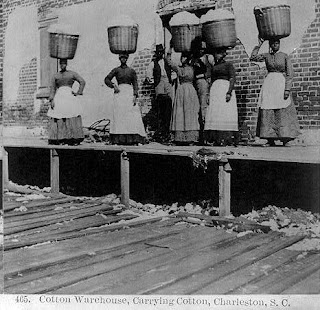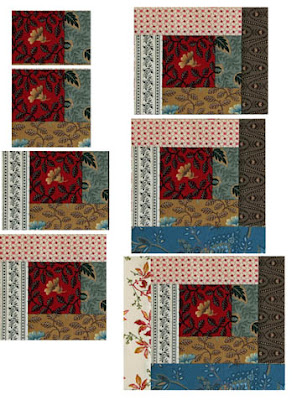Birds in the Air
by Becky Brown who writes:
"My 'birds' are a little flock of blue birds - my grandmother called them the blue birds of happiness!"
In 1861, as Southern states seceded, leaders justified their actions by expressing fears their Northern sisters were determined to abolish slavery in the entire Union . Florida 's secession proclamation cited, "recent indications of the strength of the anti-slavery sentiment of the free States
In fact, most Northerners continued to ignore slavery's injustices and posed no threat to the South's "peculiar institution." Yet the minority who felt obligated to oppose human bondage were persistent and vocal.
Abolitionist was the name for an activist who demanded the end of slavery. In 1784 the "Pennsylvania Society for Promoting the Abolition of Slavery and for the Relief of Free Negroes Unlawfully Held in Bondage" was organized to reflect Quaker resistance to slavery.
The Philadelphia Antislavery Society photographed in 1851
Women were active members of the antislavery societies.
A cartoon satirizing Martin VanBuren's attempt
to reach out to anti-slavery activitists
features a female abolitionist, a favorite caricature.
Abolitionists used a symbolic image of a kneeling slave, which had been designed to represent English anti-slavery societies and produced as a ceramic medallion by English potter Josiah Wedgwood in 1787. The idea of a durable, small china logo was brilliant publicity.
Copies of the kneeling slave (and a female equivalent) are found on all manner of goods---posters, dinnerware, and textiles---on both sides of the Atlantic .
One antislavery activist recalled purchasing "children's handkerchiefs at auction. Among them were those on the subjects of temperance, Sunday-schools, and abolition of slavery. The latter were particularly striking---a negro kneeling and chained, with the motto, 'Am I Not A Man and A Brother?' "
The shackled woman on abolitionist china.
One antislavery activist recalled purchasing "children's handkerchiefs at auction. Among them were those on the subjects of temperance, Sunday-schools, and abolition of slavery. The latter were particularly striking---a negro kneeling and chained, with the motto, 'Am I Not A Man and A Brother?' "
Quilt attributed to the years 1830-1860,
made by Deborah Coates, Pennsylvania.
Quaker Deborah Coates might have cut a piece from a similar handkerchief for her silk quilt, one of the few surviving quilts with a reference to slavery. Deborah and her husband Lindley were active in anti-slavery politics and the Underground Railroad.
In a central patch is a small copy of the abolitionist image with the words
"Deliver me from the oppression of man."
After Deborah's death in the 1880s, her offspring cut the abolitionist quilt in half, one side for each branch of the family. When their descendents decided to rejoin the pieces, they removed the binding and found the small image of the African man, which had been cut in half and hidden for decades.
The quilt pattern she used was a variation of a popular block pieced of triangles. In 1929 quilt historian Ruth Finley listed names: Birds in the Air, Flying Birds or Flock of Geese. Although we cannot know what Deborah Coates called the pattern, the idea of birds in the air seems particularly appropriate for a block to recall the abolition societies.
Patti Butcher Poe made this adaptation of
Deborah Coate's quilt for my book
Quilts From the Civil War.
Cutting the 8" Finished Block
Cut each in half with a single diagonal cut. You need 6 light triangles and 3 dark.
B - Cut one dark square 8-7/8". Cut it in half with a single diagonal cut. You need one of those triangles.
Becky wrote that she sprayed starch on the triangles to stabilize them as the seams are on the bias.
The Coates quilt is now in the collection of the Lancaster Quilt and Textile Museum. See more about the museum at their website.
http://quiltandtextilemuseum.com/qt/?page_id=42
http://quiltandtextilemuseum.com/qt/?page_id=42
Read more about the antislavery image on two blogposts I've done.
http://barbarabrackman.blogspot.com/2010/11/abolitionist-embroidery-2.htmlAnd read more about Deborah Coates on the Sesquicentennial Blog maintained by the State Library of Kansas. Scroll down a bit.
http://kansas150slk.blogspot.com/2010/09/kansas-quilters-and-kansas-quilts.html























































